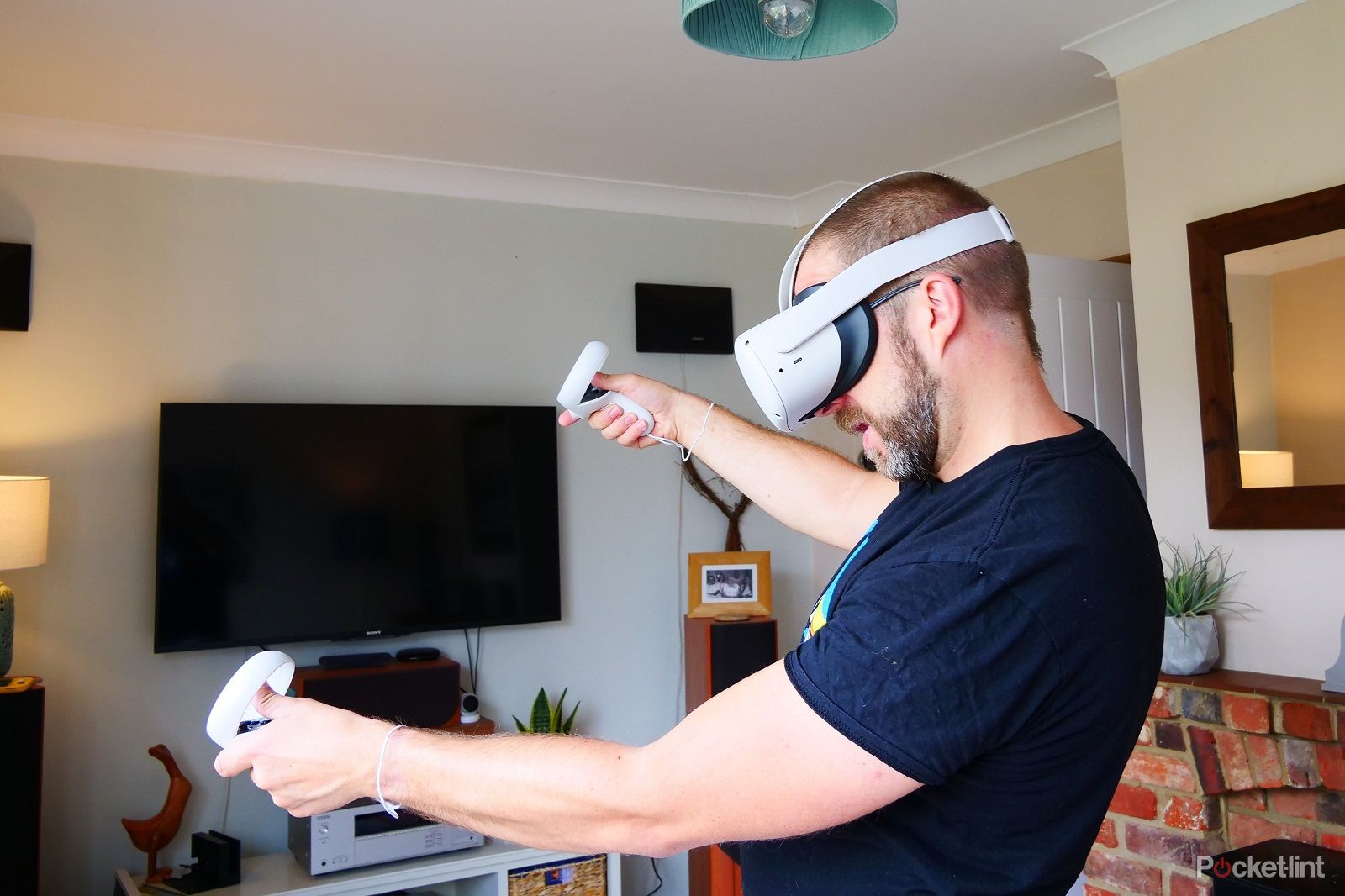All eyes are on Apple as it delves into a new product segment for the first time in years. The Apple Vision Pro is certainly an impressive piece of hardware, and early indications suggest it might be the best mixed-reality headset ever.
However, while the clever outward-facing OLED panel might make it look like it has transparent optics, the Vision Pro is actually a VR headset. It just happens to be one with exceptionally good pass-through cameras.
That, plus the fact that it has some serious horsepower under the hood, means that the Vision Pro is capable of running the same amazing VR games that are currently being enjoyed on the Meta Quest 2 and PC platforms. So, why didn't Apple's lengthy unveiling include any of these games?
There's one simple reason - the Apple Vision Pro doesn't have controllers. Almost every game developed for VR in the last decade or so has relied on motion controllers, and so adapting them to work with Apple's entirely hand and eye-tracking-based system would be quite the task.
That's not to say that hand and eye tracking isn't a great way to interact with a VR headset, most of the early hands-on tests say that it feels very intuitive, and I'm sure it's a better way to interact with menus and 2D floating screens - but it's no good for gaming.
Most games need more granular control, especially those that use joysticks for movement, which is something that would be exceptionally difficult to replicate with hand tracking. Especially if you want a good degree of accuracy.
Even when you look at the most popular static VR experiences, such as Beat Saber, controllers are massively beneficial. Beat Saber has amazing haptic feedback, to the point where it really feels like you're wielding a lightsaber. Firstly, you're holding on to something that's almost exactly the right shape, then as you slice through targets, the haptics let you feel the resistance and texture of the object, adding to the overall immersion.
It would be totally possible to port Beat Saber to use a hand-tracking system, but the experience wouldn't be nearly as convincing.
The question is, does Apple care about any of this? It doesn't seem so. The focus of the presentation was almost entirely on the use of the headset for work, seated entertainment and tabletop AR. The only time gaming was shown, it was a seated experience with a PlayStation controller and a large virtual floating display. That's cool and all, but it's slightly frustrating when I know the headset is capable of so much more.
So why isn't Apple looking to get into the burgeoning VR gaming segment? It's impossible to say for sure, but I wonder if it might be due to fears of motion sickness. It's a real problem for a lot of people, and even as a fan of VR myself, I get affected by certain movements. Feeling sick from the use of a product isn't a very Apple-like experience, and I suspect it's something the brand will avoid at all costs.
That's not to say we won't see proper VR games on the Vision Pro. Many people have compared the launch of the headset to the launch of the original iPhone, which was impressive hardware but launched without all the apps that make iPhone so great. There's still almost a year until the headset hits retail, and who knows what could be developed in that time.
One thing's for certain, though, Apple doesn't plan to release motion controllers for the Vision Pro, and that means it's not likely to be the gaming platform for me. On the other hand, it also means that hand and eye tracking from other manufacturers is about to get a whole lot better, and I'm excited to see what that brings to the gaming world.



